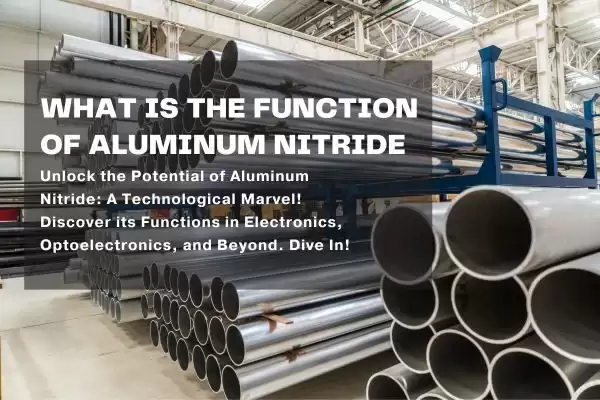
Sep 7,2023
Within advanced materials, a singular compound distinguishes itself through its exceptional properties and wide-ranging applications: Aluminum Nitride. Frequently lauded as the unsung hero of contemporary technology, this compound assumes a central role in diverse industries thanks to its distinctive functionalities.
At its core, Aluminum Nitride is a wide-bandgap semiconductor. This characteristic makes it an exceptional choice for applications requiring high thermal conductivity and electrical insulation simultaneously. This is especially crucial in the field of power electronics.
Studies have shown that Aluminum Nitride has an impressive thermal conductivity of approximately 320 W/m·K, rivaling certain metals. This property is leveraged to create substrates for high-powered electronic devices, where heat dissipation is critical. By facilitating efficient heat transfer, Aluminum Nitride ensures the longevity and reliability of electronic components.
Beyond its prowess in thermal management, Aluminum Nitride also shines in the world of optoelectronics. Due to its wide bandgap and high optical transmittance, it finds extensive application in ultraviolet light-emitting diodes (UV LEDs) and optoelectronic devices.
Statistics show that Aluminum Nitride-based UV LEDs exhibit significantly higher efficiency and longer lifespans compared to their counterparts using traditional materials. This is a testament to the superior optical properties of this compound.
The piezoelectric nature of Aluminum Nitride is yet another feather in its cap. This property converts mechanical stress into electrical charge and vice versa. Such functionality is instrumental in various sensor applications.
For instance, Aluminum Nitride-based sensors have demonstrated exceptional sensitivity and accuracy in automotive engineering. This translates to precise measurements in critical systems, enhancing overall safety and performance.
Aluminum Nitride's capabilities extend into the realm of photonics, where it plays a pivotal role in developing integrated circuits for optical communication. Its high refractive index and compatibility with other semiconductor materials make it a cornerstone in producing photonic devices.
Recent data showcases a surge in adopting Aluminum Nitride in photonics, driven by its ability to enable high-speed data transmission and processing. This surge indicates the growing recognition of Aluminum Nitride's unique function in this domain.
With the ever-increasing demand for compact and powerful electronic devices, the importance of efficient thermal management cannot be overstated. This is precisely where Aluminum Nitride steps into the limelight.
A recent market analysis reveals a substantial uptick in utilizing Aluminum Nitride substrates in emerging technologies such as 5G infrastructure, electric vehicles, and advanced computing systems. The compound's unrivaled thermal conductivity and electrical insulation properties are the driving force behind this trend.
Aluminum Nitride finds a niche in the aerospace industry, where weight reduction and performance optimization are paramount. Its exceptional thermal conductivity and its lightweight nature position it as a preferred choice for components in spacecraft and aviation systems.
Insights from aerospace engineering projects indicate a growing reliance on Aluminum Nitride for critical applications like thermal barrier coatings and electronic components. This underscores its pivotal function in ensuring the efficiency and safety of aerospace technologies.
In conclusion, Aluminum Nitride is a testament to materials science's ingenuity. Its multifaceted functions encompassing electrothermal, optoelectronic, piezoelectric, and photonic domains position it as a cornerstone of modern technology. As we forge into an era of unprecedented technological advancement, the significance of Aluminum Nitride is bound to grow, shaping the landscape of innovation across industries.